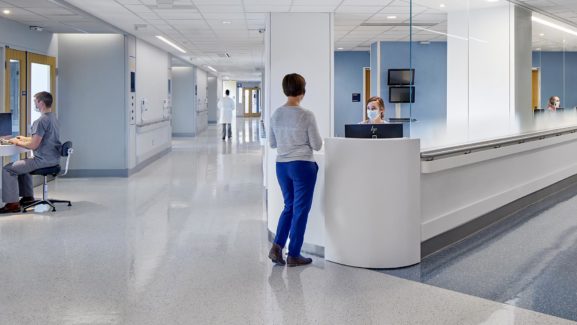
Despite Major Demolition, a Pandemic, and Supply Chain Delays, the New MRI-Guided Radiation Therapy System Is Ready for Launch
UVA Health regularly acquires new devices and new technology to improve patient care. Some are quick and easy to incorporate into our daily practice. Some take many months of planning and preparation to launch. Toss in a few major hurdles like a facility demolition and rebuild, a pandemic shutdown, and a supply chain problem, and adding a new, high-tech piece of equipment to our treatment arsenal becomes a feat just shy of a miracle. (Photo above, l-r: Nathaniel Brown, Joseph Rainwater, and Mark Humbertson)
Why This Technology?
According to our radiation oncology team, one new machine was well worth this miraculous effort. The MRI-guided radiation therapy system, MRIdian, is an innovative device that combines two cutting-edge technologies into one machine. Magnetic resonance imaging (MRI) offers superior soft tissue visualization in real time, while a linear accelerator administers high-dose, targeted radiation. Together, these advanced technologies will optimize our ability to treat challenging cancers that occur in parts of the body like the lung, pancreas, and liver that move with respiration and digestion.
“The MR-linac will allow us to more accurately target tumors, while also avoiding radiation exposure to nearby normal tissue. It's a step ahead in our treatment of cancers like pancreatic cancer, which is notoriously difficult to treat and requires high doses of radiation in a part of the body where this radiation can cause a lot of critical structural damage,” says radiation oncologist Einsley Janowski, MD, PhD. “With the Linac, we can see the tumor clearly and turn the radiation beam on and off, so that we’re only treating the tumor when it’s in the proper position.”
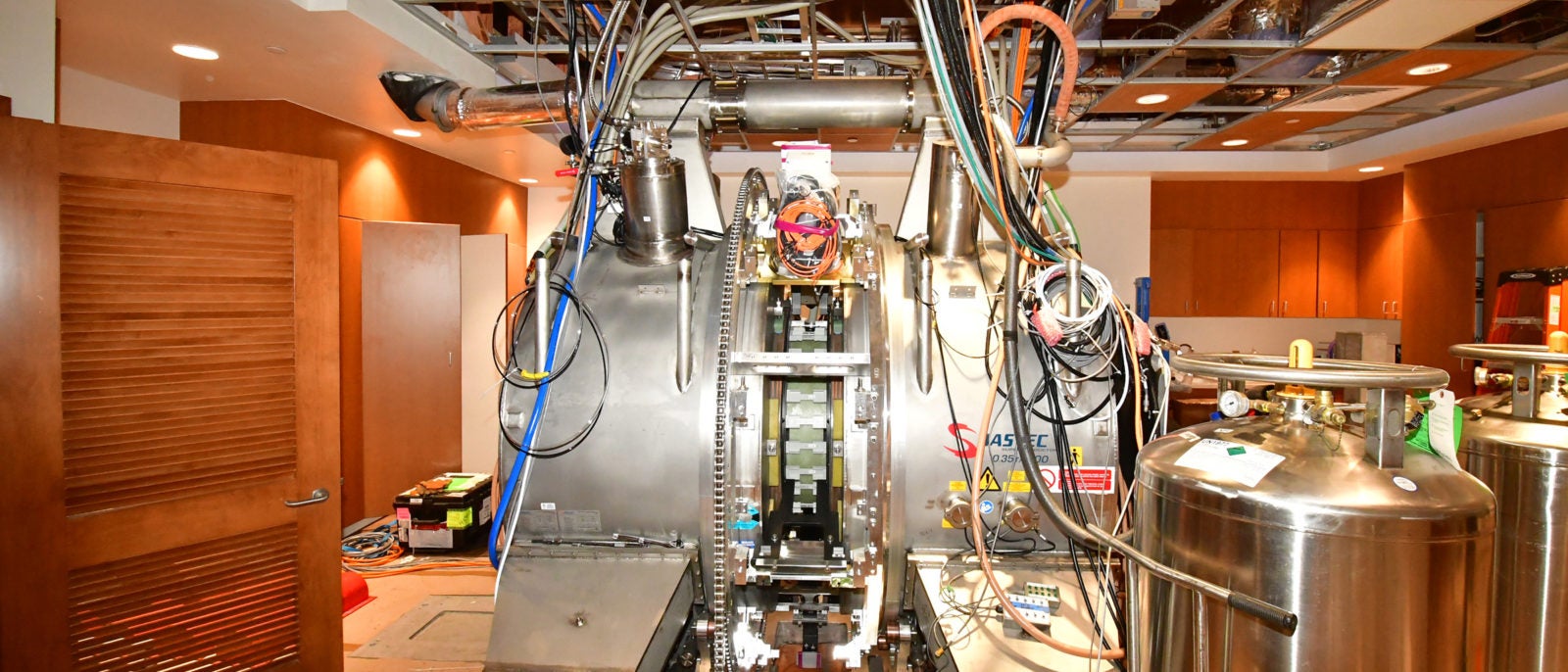
Staying the Course
Planning for the MR-linac began in 2018. Members of our medical staff — radiation oncologists, radiological physicists, therapists, nurses, and others — met monthly with our facilities team and reps from the device vendor, ViewRay, to map out necessary steps to build a home for this machine and put it in place safely and effectively. Unfortunately, about the time the building permit came through in 2020, COVID forced the planning team to put the project on hold.
“Dr. Paul Read, [medical director of the Department of Radiation Oncology] really spearheaded the process of getting the MR-linac here to UVA. I’ve been working with him since the beginning to plan everything, from the architecture of the room to coming up with policies on how best to treat patients,” says Janowski. “COVID really set us back, but Paul worked very closely with hospital administration to make sure the project wasn’t canceled altogether. Once we got our bearings with COVID, we were able to get back up and running and resume planning."
After 15 months, the team finally got the green light to begin construction in October of last year. They’ve been working diligently ever since — day and night, even on holidays to install what Read describes as “marvel technology.”
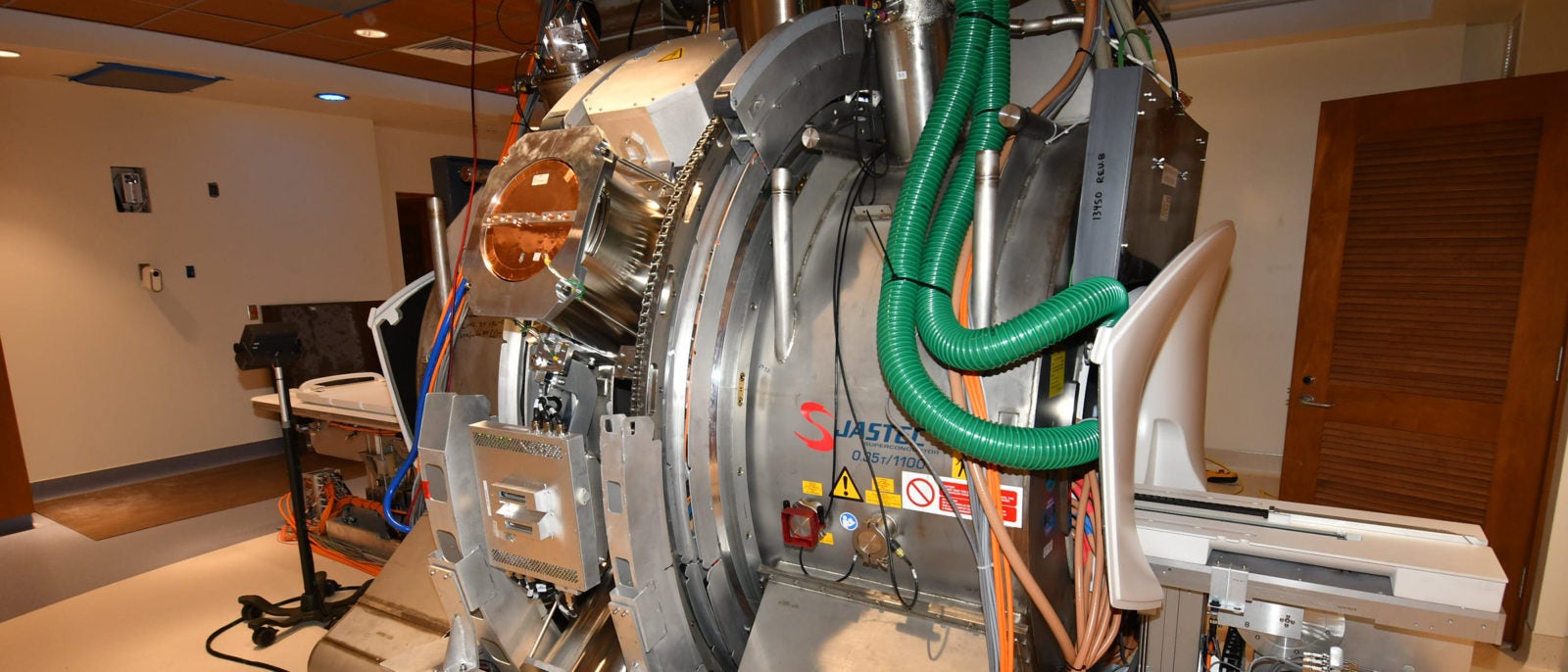
A Home for Innovation
Hurdle number one: creating a space tailored to house this unique device. “When they built the Cancer Center, they planned for a Linac, but it didn’t include the MRI component,” says Mark Humbertson, construction administration manager with Facilities Management. “All of the infrastructure we had in place was incompatible with this new technology.”
“This linear accelerator is basically a very large radiofrequency producer, which helps generate the radiation. An MRI is a very sensitive radiofrequency receiver. So, if you have this technology that’s producing a lot of this radiofrequency right next to something that is receiving a lot of radiofrequency, it’s going to produce a lot of noise that distorts your image,” says radiological physicist Matt Mistro, MS.
The solution is to hide these two systems from each other to minimize the noise. “It’s like having a rhinoceros and an elephant in the same room together and keeping them from seeing each other,” explains Director of Radiological Physics Jeff Siebers, PhD. That requires some very special cages. Cages made out of concrete slabs, copper, and stainless steel, to be exact. “We needed to build a room within a room within a room to provide appropriate radiofrequency shielding,” adds Siebers.
The first step in this process was what Humbertson calls an “insane” amount of demolition. “Basically, we had to cut and jackhammer out 2-foot-thick concrete slabs and walls to prepare for that to be replaced with new concrete slabs and walls using stainless steel rebar, which was compatible with the new technology,” he says.
Of course, jackhammering and pouring concrete aren’t exactly conducive to a 24-7 healthcare environment. Communication, careful planning, and coordination among all teams involved were key to minimizing disruption in our services. “The hospital doesn’t shut down at night. You still have patient traffic and emergency department teams to coordinate with, so closing roads to bring in equipment and turning off the main power supply for a building takes coordination so that everyone can do their job and be successful,” says Humbertson.
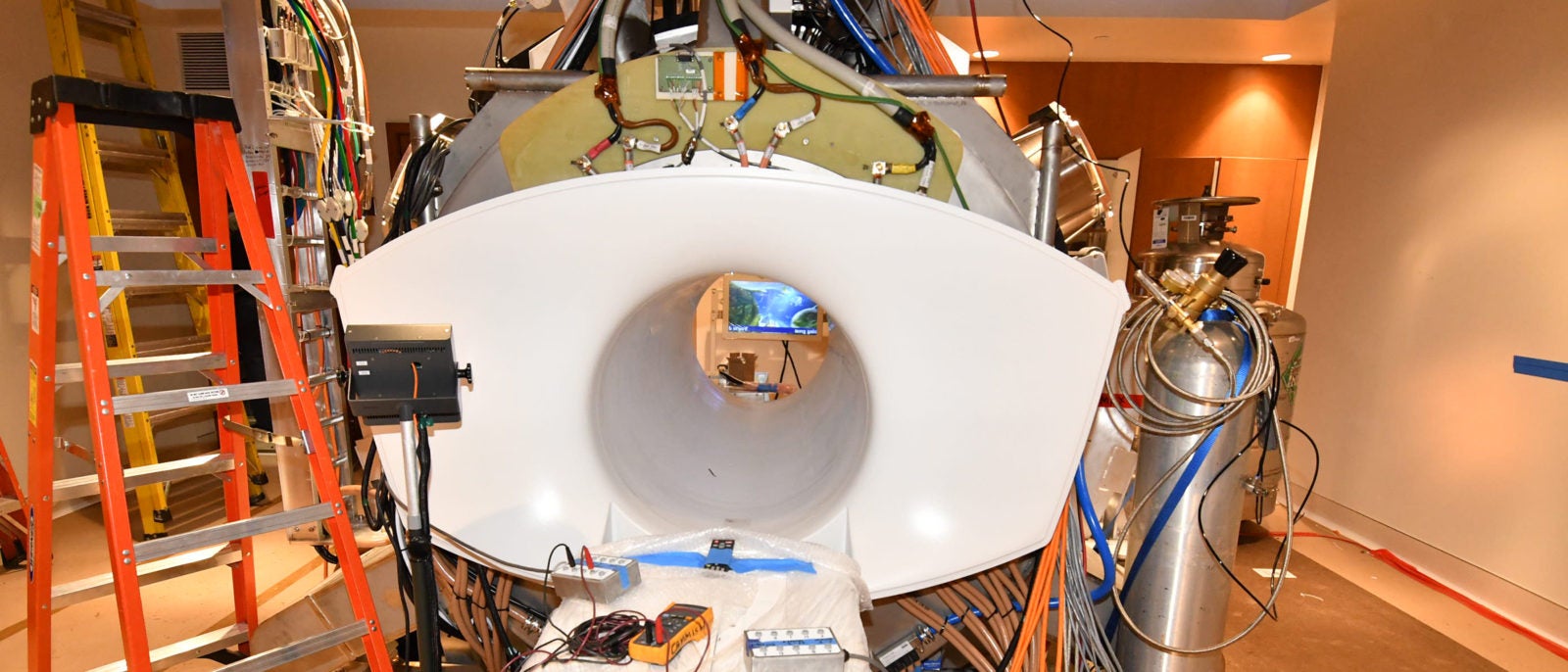
Every Piece Matters
When the time came to install the 20-foot-long, 19-foot-wide, 9-foot-tall machine, moving it in in pre-assembled wasn’t an option. Crews had to bring it in piece-by-piece and assemble it within the vault. “This is a large machine, so we had to close down one of the major roads at the hospital and bring in a crane so that we could drop the equipment through a roof hatch,” says Humbertson.
Throughout the months-long construction process, the only hiccups were the result of the pandemic and supply-chain issues. “Right as we got toward the tail end of the project, all of a sudden, some of the major components suddenly weren't available,” says Joe Rainwater, project director, Facilities Management.
Still, out of the 25 MRIdians in the U.S., the installation at UVA Health was one of the fastest ever done, according to Dan Schuller, customer readiness manager with ViewRay.
For this, Rainwater says his team deserves a lot of credit. “We had two CAMs [construction administration managers], which is unusual on a project of this size. But there was day and night work involved. I gotta say that Mark and Nate [Brown] tag-teamed on this wonderfully. They did a great job. There was a lot of coordination, both with the users and other entities around Grounds and with the contractor, Kjellstrom & Lee. Between the two of them, they took care of the construction on their own.”
“I think that the ongoing engagement by the clinicians, communication between [the UVA] team on the construction side and our team really were key to everything going so smoothly,” says Laura Bauchert, customer success manager with ViewRay.
“We've been having meetings for three years with clinical folks — a lot more meetings than is normal for a project like this. But that collaboration made a huge difference,” adds Rainwater.
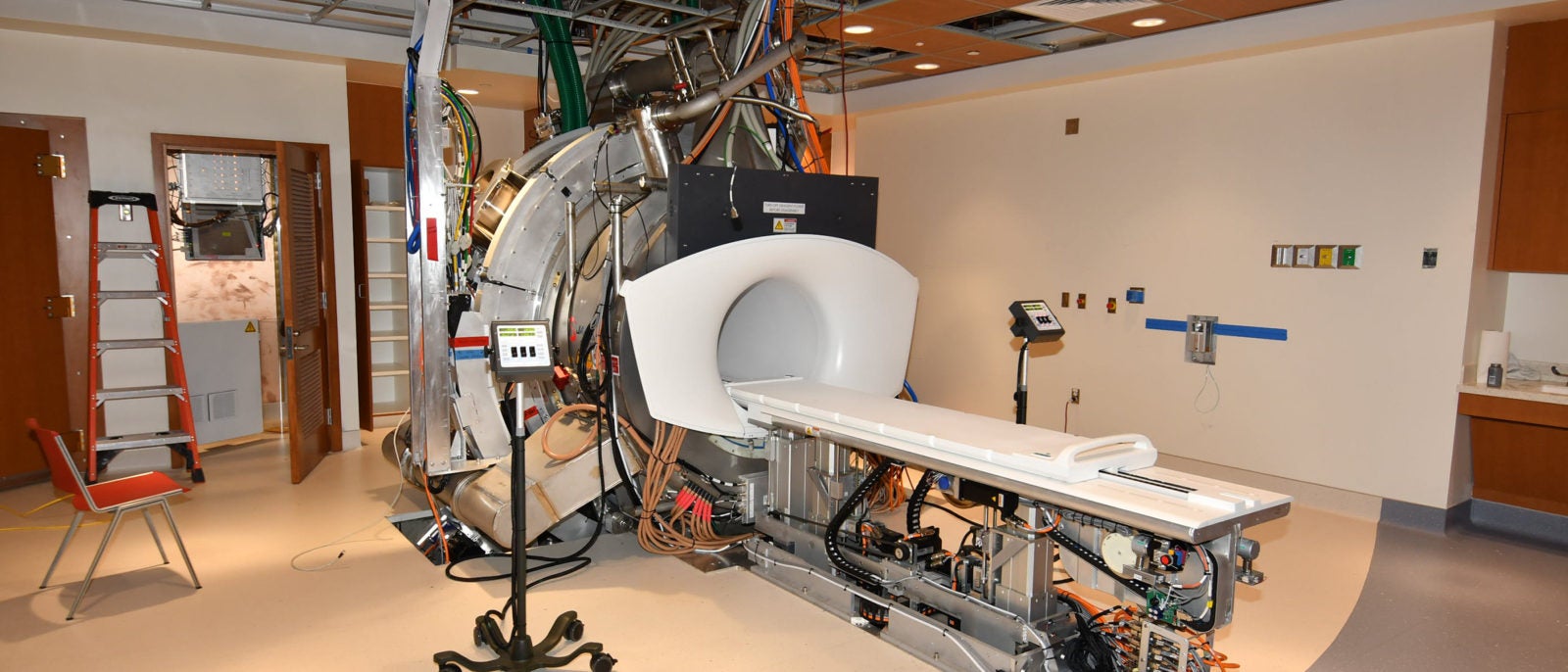
Well Worth the Effort
Now that the MR-linac is in place and up and running, Mistro and Siebers have taken the reins. “We’re doing a dry run process to ensure the functionality of the machine, and we’re doing as much practice as we possibly can as a team to determine the best workflow,” says Mistro, who will be the lead physicist for the Linac.
“Matt has to go through and make sure that the field doesn't distort — that he can hit a grain of rice accurately no matter what direction the radiation beam is coming from,” adds Siebers. Meanwhile, other physicists, dosimetrists, and therapists involved are attending a training workshop at ViewRay so that everyone will have an idea of how things work. The goal is to go live with our first patient in late November to early December.
“It’s exciting to have this new technology and say we’re one of only two centers in Virginia that has an MR-linac currently,” says Andrew Taylor, chief radiation therapist. “I think we’re all looking forward to using it to help our patients.”
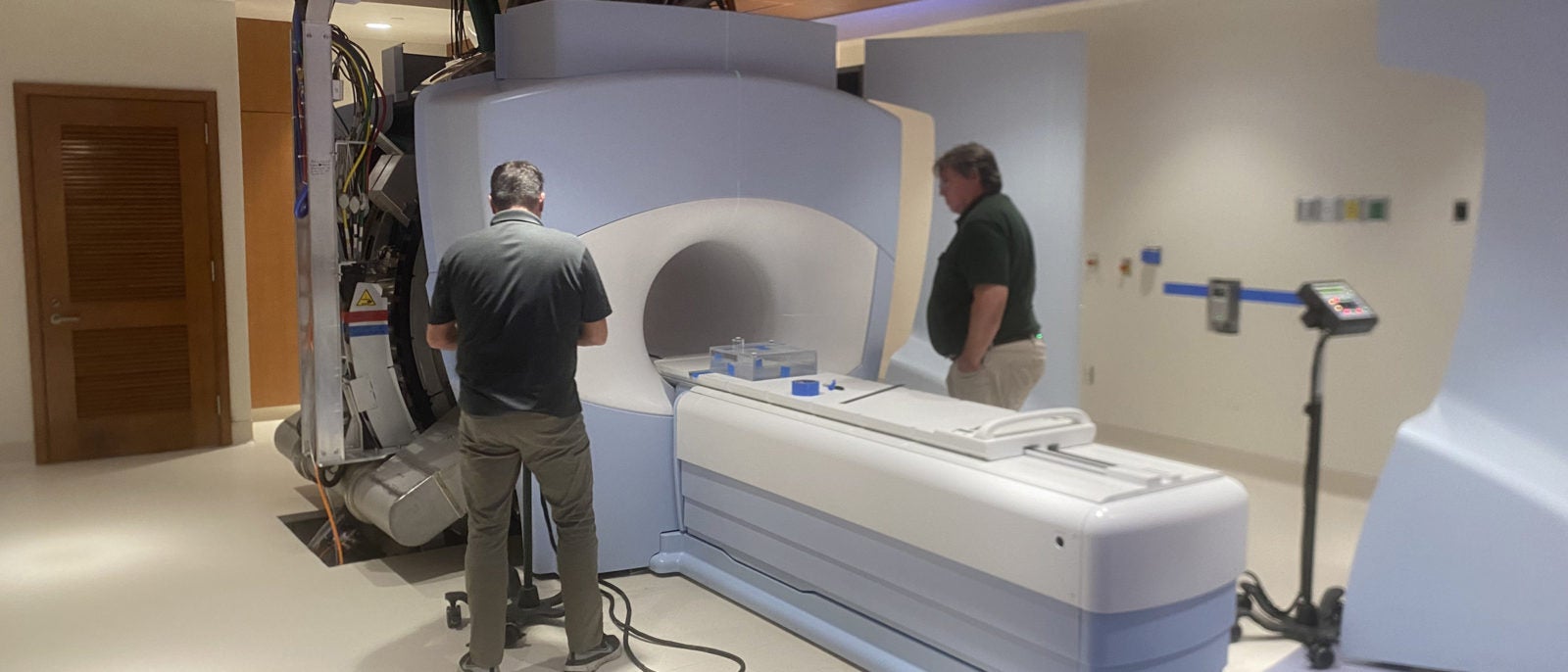
Latest News


